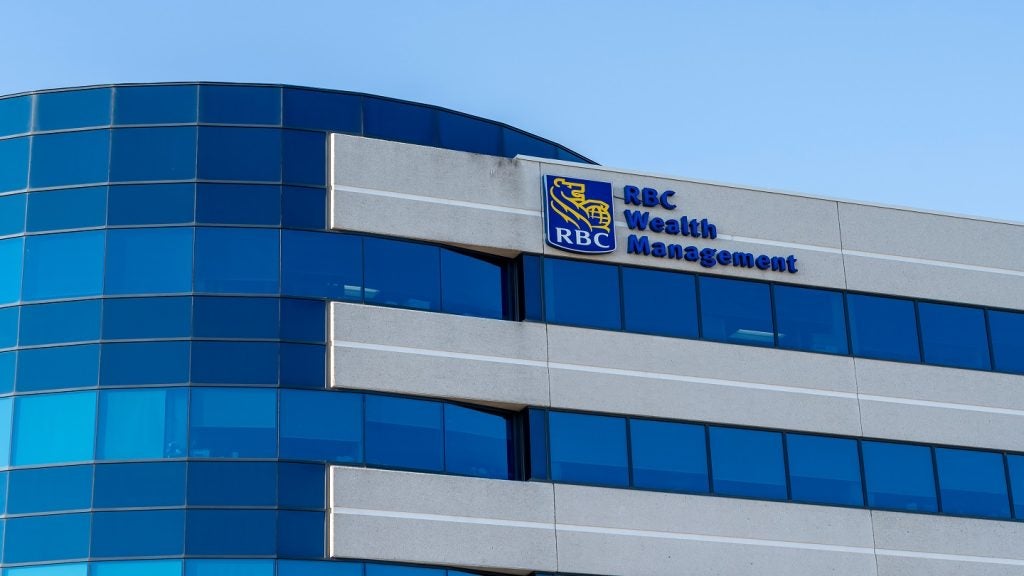With sports salaries growing at a
compound rate of 8 percent, and projected growth in assets under
management of 30 percent at one bank, the sports and entertainment
segment is appealing and potentially recession-proof. Will Cain looks at the strategies of
some leading players.
Sports professionals and entertainers
are known as a potentially lucrative community in wealth management
because of the rapid growth in salaries in recent decades.
According to some estimates, salaries of
sportspeople have grown at a compound rate of 8 percent a year for
the last 40 years making it a fast-growing and virtually
recession-proof segment.
“Generally, if you look at first division
sports, they have weathered the recession incredibly well,” said
Mark Pannes, head of the global sports group at HSBC Private
Bank.
Television revenues, which make up a large
part of sports club revenues, tend to be negotiated as multi-year
deals. Ticket sales are 60 percent to 70 percent based around
season ticket sales or debentures, meaning wild swings in revenue
are generally rare.
“Commercial contracts tend to be linked to
coincide with the TV deals so when the crisis started to hit, you
realise it has to last three or four years for there to be a
clawback on revenue,” added Pannes. “It’s not recession proof, but
it is recession insulated.”
There are a number of onshore providers of
wealth management services to the sports and entertainment segment
and competition in this market is fierce.
Private banks, particularly in Europe and
Asia, are seen to have the strongest advantage in working with
international clients. In the UK, resident non-domiciled
footballers are an important market, with around 420 of the 700
players in the league registered as such, according to Barclays
Wealth estimates.
Standard Chartered set up a global sports
practice in July last year to work on a target market of 600
athletes in Australia, New Zealand and South Africa with around $1
billion in assets under management.
Sports professionals, especially those that
are internationally mobile, fall nicely under the purview of
private banks because of their ability to operate across borders
and offer tax, currency and offshore advisory services.
“If you look at athletes today you are seeing
a growing trend in income, with athletes becoming more global” said
Feroze Sukh, head of the global sports practice at Standard
Chartered Private Bank.
“They are starting to play more
internationally. There are various different streams of the game –
cricket and the Indian Premier League is an example of how things
are changing.”
Projections for potential growth in this
market are rare, though SunTrust, which has operated in sports and
entertainment for 20 years, is expecting 20 percent to 30 percent
increases in assets under management, loans and deposits in
2010.
Key to this, according to Thomas Carroll,
managing director of sports and entertainment banking at SunTrust,
is the bank’s balance sheet.
The US-based bank, which has a retail,
corporate and private banking offering, works with sports
businesses on corporate financing, which opens up opportunities
with wealthy clients.
On an individual level, it looks to acquire
clients as they begin to emerge, often with products as simple as
basic bank accounts or unsecured loans.
“We have many multi-Grammy Award winning
artists who have perhaps tens of millions of dollars managed by
SunTrust that may have started with a credit card or a bus loan,”
Carroll said.
“It’s something small in the grand scheme of
things that creates a loyalty to the bank that lasts over
time.”
SunTrust has been active in the market for
around 20 years, after it developed a strong client base of wealthy
musicians in Nashville, Tennessee, and its links with the country
music genre. At the recent Country Music Awards in Nashville, held
in November, 80 percent of the winners were clients of
SunTrust.
The bank also has an established motor sports
offering. It counts 54 winners of the 101 races at the top three
levels of Nascar among its clients.
Carroll plans to target actors in 2010 and is
looking to acquire advisers in the Los Angeles area. He is also
approaching independent production houses, intermediaries and
business managers that have relationships with prospective
clients.
“We have a good market share in a number of
areas, but we have a 0 percent market share in film,” he said. “We
expect that to change significantly in the coming years.”
Pannes said there were also spin-off
opportunities to gain access to wealthy individuals not generally
considered part of the sports and entertainment industry, but that
derive much of their income from it.
He likened the business to a dartboard with a
bulls-eye and two outer rings. There was a core of athletes in the
public eye, which formed the bulls-eye.
Outside of that there was an “outer ring” of
professionals that make most of their income from sport, for
example the owner of a motor racing circuit, agents or club chief
executives.
Beyond that is a web of people tangentially
involved that still consider themselves to be part of the
industry.
Pannes said his department targeted the inner
ring of sportspeople, while those more loosely connected were
referred from the sports practise to other parts of the private
bank.
Client acquisition
The most popular way to approach prospective
sports and entertainment clients is through their management
companies and agents, or through the acquisition of advisers or
businesses in the market.
Standard Chartered Private Bank is actively
approaching these organisations to get its sports practice off the
ground in Asia.
It has a number of sporting ambassadors for
the brand, including Australian cricketers Greg Chappell and Steve
Waugh, rugby player Tim Horan and David Mitchell, a former football
player and coach of Perth Glory.
HSBC Private Bank works with Steve Norton, a
former Chelsea footballer and former managing director of Advantage
International, a sports agency which was bought by Octagon. He is
employed in a consultancy capacity. Andy Sutton, managing director
and founder of a UK sports specialist IFA, Conforto, said these
types of relationships were vital in this market.
“You ignore the advisers of sportspeople at
your peril,” he added.
Pannes said targeting has become more
professional in recent years. The bank has invested in
better-quality research to identify prospective clients, but he
said the process was still “more alchemy than science”.
The core group HSBC looks to work with is
top-end athletes, but this approach needs to be blended with a
focus on clients with upside potential.
In some cases, a member of the England
under-19 team would be a more attractive target to the bank than a
33- year-old overseas footballer on a short contract earning £2
million to £3 million ($3.1 million to $4.6 million) a year.
“Sometimes, we would be happier taking a flier
on a member of the under-19 squad, the England team, who might be
making £50,000 per year because the upside potential is much more,”
Pannes said.
Establishing relationships with player
associations is also an important means of attracting potential
clients. HSBC has an agreement with the Rugby Players’ Association
(RPA), and has put around 130 players onto its Premier programme, a
mass affluent service.
An adviser or two is assigned to each club,
and some of the clients are passed through to the private bank.
“What we’ll find is typically we keep our
sports clients/adviser ratio at 50:1 and our competition is at
least double that,” added Pannes.
There have even been examples of sports
management agencies setting up their own wealth management business
– notably IMG, the world’s largest, which set up McCormack Advisors
International in the US.
The business has struggled, however, changing
ownership several times in the last 10 years. It was bought in 2000
by Merrill Lynch and sold back to IMG in 2002. The business is now
in private hands and is run by Rick Buoncore. It has around $1.2
billion in assets under management.
Chris Aitken, a senior financial planning
director at Rensburg Sheppards, a UK-based investment manager, said
there was a perception in the industry that many of the players’
financial needs were handled through existing relationships between
the players’ agent and a preferred adviser.
Aitken added it was difficult for more
traditional businesses like Rensburg Sheppards, often associated
with old money, to market themselves to a younger clientele.
“It’s a balancing act – we have a
long-standing client base which we don’t want to alienate, but at
the same time we’d like to attract a younger generation of sports
stars and entertainers,” he said.
“We are sponsors of the Royal Liverpool
Philharmonic Orchestra, which has been very positive exposure for
us. But with the best will in the world, that’s unlikely to cut
much ice with young celebrities or sports stars. We are trying to
do something about that, by sponsoring sports events such as golf
and cricket days.”
Part of the pitch to prospective clients at
Barclays Wealth is creating the idea of a family office-type
service, with the wealth manager bridging relationships between a
client’s lawyer, accountant, agent and IFA, according to Paul
Richardson, head of sports and entertainment at the bank.
Not everyone is impressed by the types of
service provided by private bankers, however. Sutton, at Conforto,
founded his business because he had been “underwhelmed” by the
service he received as a wealthy rugby player.
He said the experience was impersonal and he
felt there was not enough attention paid to individual
circumstances. The idea behind Conforto was to do “the boring
stuff” well, but also to provide a more proactive service, offering
access to unique investment opportunities in private equity,
property and offshore investments. Recent initiatives have included
a focus on distressed property sales in the US.
Services and investments
As sports, media and entertainment is a broad
segment, Barclays Wealth sub-segments its offering into sport,
music and acting. Even within these, there is a wide variation of
wealth management considerations, according to Richardson, and for
the most part the general principles of financial management are
applied to individual circumstances.
“For example, a motor racing driver will
generally be on a fixed-term contract of three to five years and
there are fixed earnings for them,” he said.
“Golfers are very much paid on performance and
that in turn affects their rankings and drives their appearance
fees and sponsorship revenue. If you are on a contracted cycle, we
can plot what will happen over the next three years to five years,
but the golfers are very much only as good as their last
performance.”
In the early stages of careers, particularly
in sport, there is generally a need for lending services, which is
often where private banks have an advantage because of their
balance sheets. Clients tend to have very strong cash flow, but are
asset poor to start off with.
“You have to create lending products that are
high LTV at the outset but with rapid amortisation linked to their
cash flows,” said Pannes.
By their nature, sports professionals and
entertainers are more willing to take on risk than the average
wealth management client, and managing this desire is an important
part of the financial planning process. Clients are typically
young, successful and earning in some cases millions of pounds a
year.
“They are highly competitive and also expect
good returns, so it becomes imperative that you interact with them
very differently to the way you would interact with a 60 year-old
surgeon, for example,” said Sutton.
“The advice you provide clients by nature is
quite different. Part of the challenge with any young person is to
get them to understand the importance of the future.”
Insurance
Insurance is perhaps the key product for
sports professionals and entertainers, because it protects against
career-threatening injuries and subsequent loss of earnings.
It is also important for banks in instances
where money has been lent in the expectation of future cash flows,
and is an important area of initial discussion between player and
adviser.
“From an insurance perspective, it’s an
opportunity to see if they have the right insurance in place,” said
Steve Talboys at insurance broker Aon.
“Have they got the right type of insurance in
place and would it trigger in the event of a claim?”
He said as well as looking at products that
were the cheapest on the market, banks needed to consider whether
the provider had a history of paying out in the event of
injuries.
| UK and Europe |
|---|
| UK private banks missing a trick |
|
There are opportunities for private banks to gain a greater He said just three of the 370 footballers on his books had come It is still telling however, that Talboys, who counts 70 percent Banks and independent financial advisers (IFA) spoken to by One of the key areas private banks focus on are footballers in Within this niche, the most viable target market for private The size of this market could be set to decline, however, “On the wealth management side, the issue you have in the UK “And even within football, it’s a big issue right now because of |
| North and South America |
|---|
| SunTrust sees 30% growth |
|
The US market for sports Competition is fierce in the segment, but Clubs in all of the main US team sports – A May 2009 bankruptcy involving the Phoenix “On the credit side, we have taken a vertical Carroll said in one case, helping out with HSBC Private Bank in the US also participates Mark Pannes, head of the global sports group “South America tends to export and Europe |
| Asia |
|---|
| StanChart first mover in Asia sports market |
|
Though there are a few onshore Last summer it launched a global sports The sports practice piggybacks on StanChart’s The Global Australian service is aimed at “For the Australian community, for example, “We managed to put together an offering where In the future, StanChart’s sports practice |







